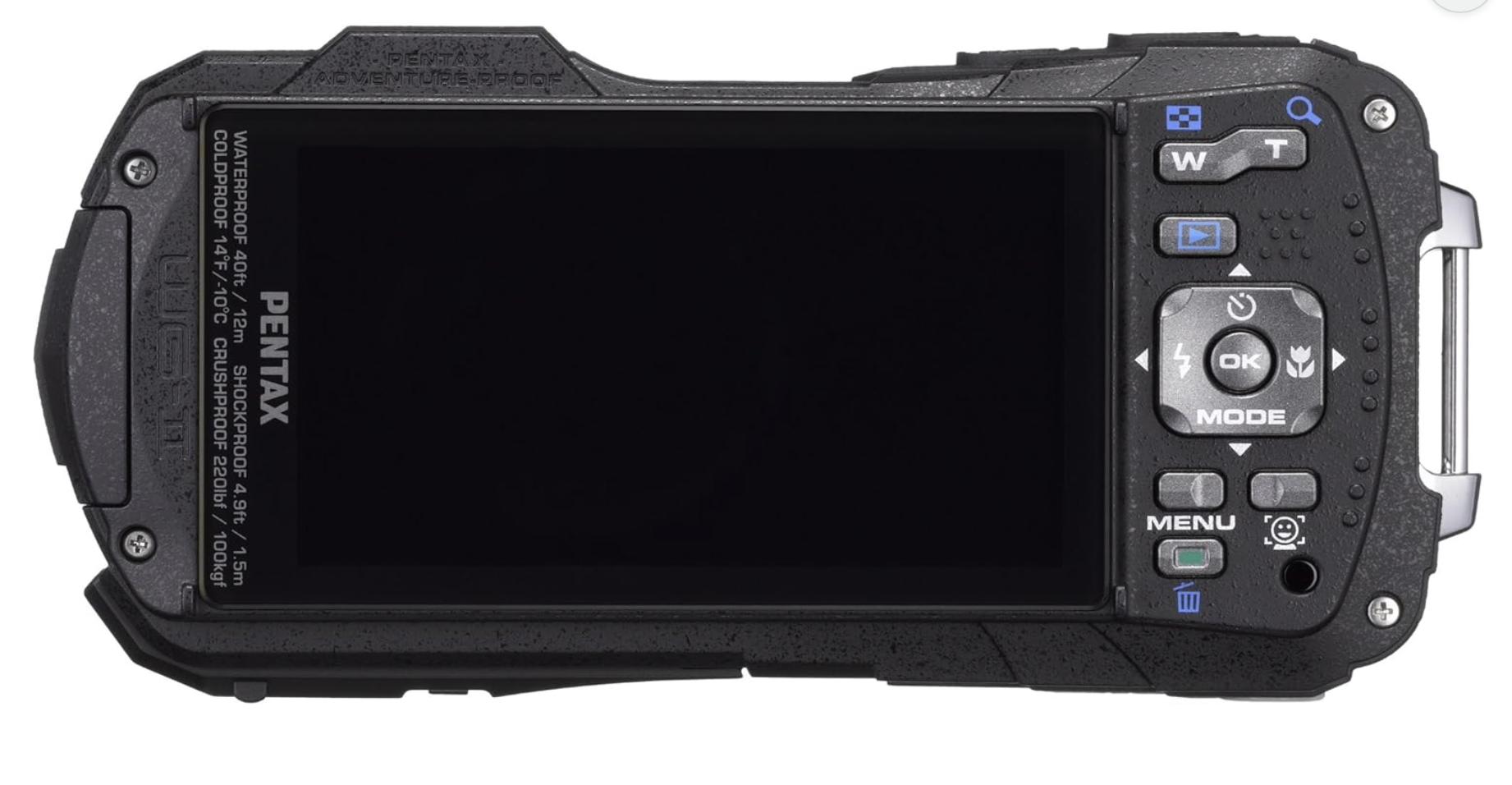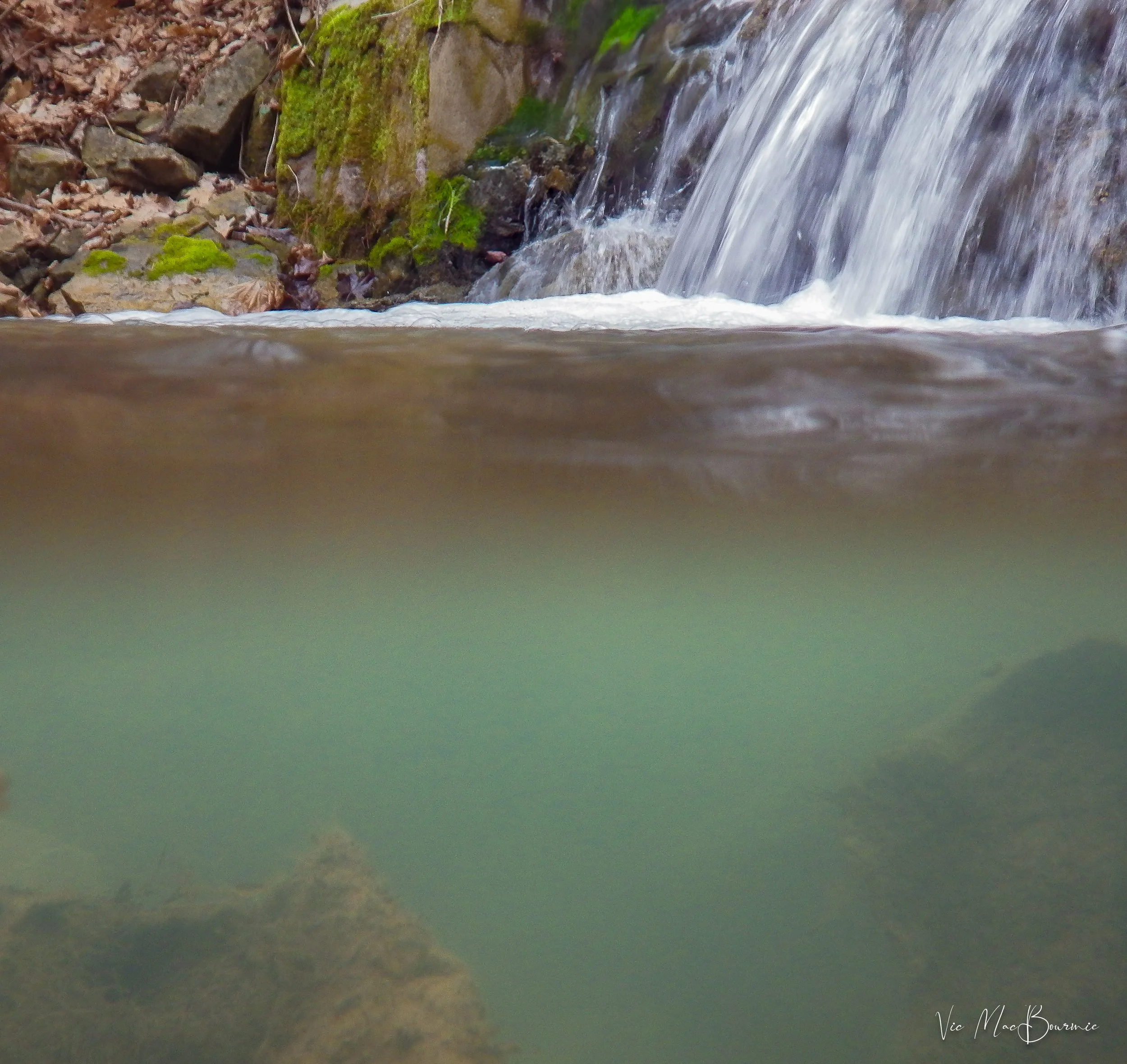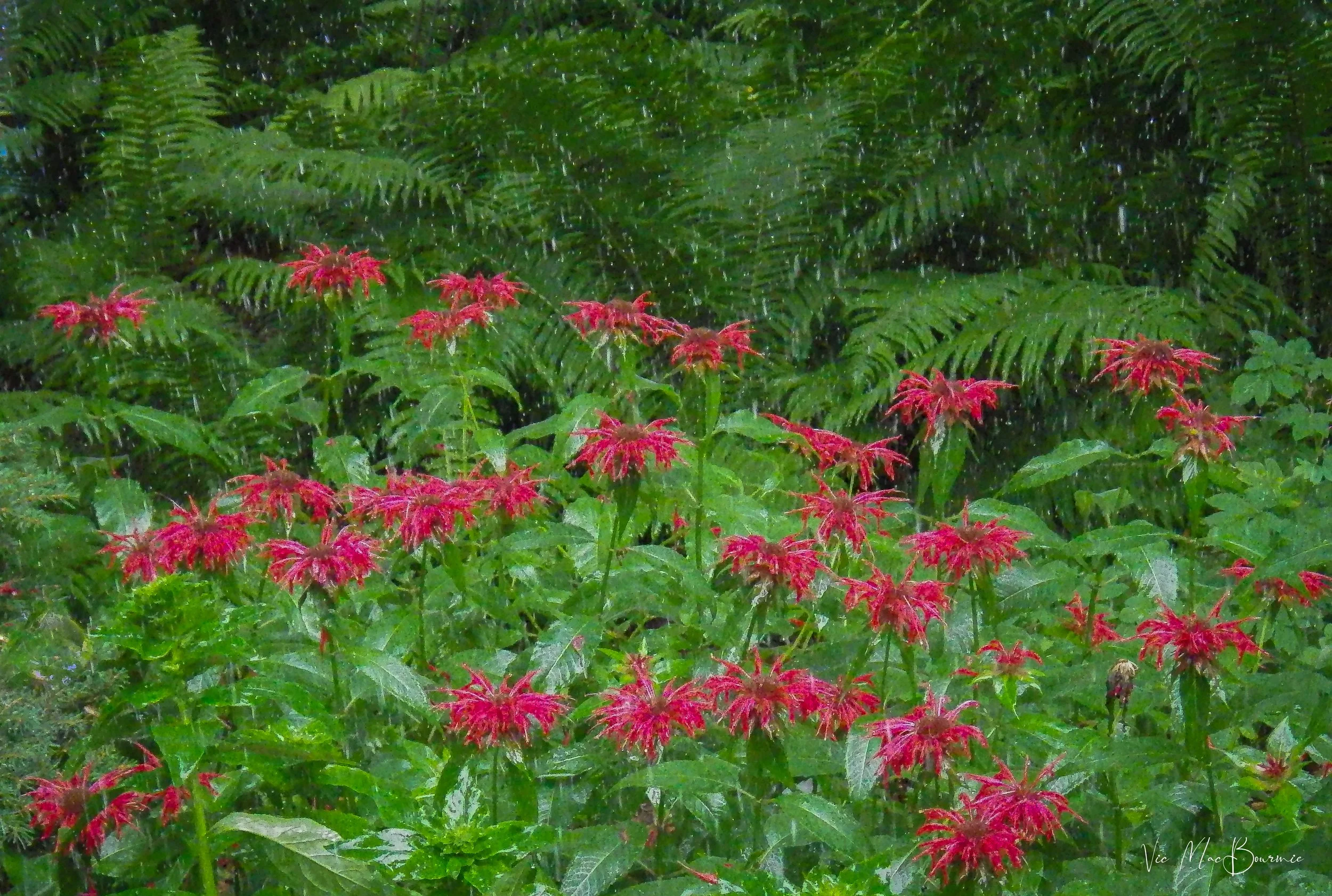Why you might need a go-anywhere, rugged waterproof camera
Five reasons to buy an adventure, waterproof camera
Adding one of these go-anywhere, indestructible, underwater cameras to my camera bag might have been one of the best decisions I’ve made when it comes to photographic equipment and simple point-and-shoot cameras.
Why? Because it opened up a whole new world of photography to me.
Not only am I not worried about dropping my camera on rocks or into a flowing stream, this Pentax WG2 is literally begging me to abuse it to get images I probably would not have dared try with my more delicate, expensive point and shoots, mirrorless or DSLRs.
And, with its 28mm-140mm (35mm equivalent) focal range, it can handle most tasks I can throw at it. From wide-angle garden landscapes, to flower and butterfly close-ups and super extreme close-ups with its specialty macro LED lights, to a dip in the pond for some fabulous pictures of life underwater including water lillies, reptiles and fish in their natural environment.
About those specialized macro LED lights – in fact its a total of six tiny LED lights around the lens that work similar to a ring light to evenly light up a macro subject close to the lens. Now that’s cool built-in feature for any camera.
And, in case you were wondering how much one of these were going to set you back, I got my almost mint adventure camera for less that $40 from a seller on an on-line marketplace. The easily pocketable WG-2 (released in 2012) is not the latest version from Pentax/Ricoh (see below for details) but its 16 megapixels is more than enough for my needs.
But that’s just the beginning.
The newest adventure cameras
RICOH/Pentax announced an expansion of its waterproof camera line just over a year ago adding the Pentax WG-1000 and the Pentax WG-8. The newest additions to the WG series of all-weather adventure cameras both feature a rugged chassis, plus the waterproof, dustproof and shock-resistant features the series is known for.
Pentax notes that the “WG-1000 is designed for casual underwater photography to a depth of 49.2 feet (15 meters) for up to one hour of continuous operation. Lightweight yet rugged, the new camera is also well suited for a range of land-based activities – it is dustproof against dirt and stains and shockproof against a fall from a height of 6.5 feet (2 meters).”
If that was not enough, it boasts a four-times optical zoom lens with a focal-length coverage from 4.9 mm to 19.6mm (equivalent to approximately 27mm to 108mm in the 35mm format). When coupled with its Digital Zoom function, the camera’s zoom range can be extended by approximately 24 times for high-magnification zoom photography. Its back-illuminated, 16.35-megapixel CMOS image sensor delivers sharp, clear, high-resolution images, even at a super-high sensitivity of ISO 3200.
“The WG-8 adds a number of features including: outstanding waterproof, shockproof and cold-resistant performance. This top-of-the-line model is waterproof to a depth of 65.6 feet (20 meters), shockproof against a fall from heights of 6.8 feet (2.1 meters), and able to operate in temperatures as low as 14°F (-10°C). Even in demanding conditions, it captures super-high-resolution still images of approximately 20 effective megapixels and high-quality 4K-resolution movie clips.”
Ricoh notes that the WG-8 features a “five-times optical zoom lens with focal-length coverage from 5mm to 25mm (equivalent to approximately 28mm to 140mm in the 35mm format). The lens’s minimum focusing distance of one centimeter allows the user to capture a wide range of images, from eye-catching close-ups to sweeping landscapes. Its Intelligent Zoom function extends the zoom range by approximately 40.5 times without compromising image quality.”
The WG-8 has a host of advanced features and user-friendly functions, including a multi-application ring light, ideal for close-up macro photography, and web camera capability when connected to a computer for live-streaming of high-quality, high-resolution images. Its heavy-duty construction ensures that the WG-8 performs superbly and dependably in harsh, demanding outdoor conditions and on worksites.
The WG-90 is a great alternative for someone looking for a less expensive model that gives up little in the way of features.
More adventure cameras from other brands
But, the Pentax WG-line of cameras is not alone in this class. In fact, every manufacturer worth its salt has one of these adventure outdoor waterproof cameras. All of them are exceptional at what they do.
The Olympus Tough has long been regarded as one of the best in the class. Check out the OM-System’s Tough TG-7’s list of impressive features, including 12 mega pixels and 4K video features.
But don’t forget about Nikon or Canon and Fuji. Even Kodak offers an underwater adventure camera.
Marketing does not do them justice
These cameras are often advertised as underwater cameras and marketed with images showing beautiful beaches and underwater shots of fish on colourful Caribbean reefs, or mountainclimbers grabbing shots near the top of Half Dome.
I think these marketing approaches do a disservice to how useful these cameras can be for everyday photography. Their small sensor size would not make them my go-to-camera of choice for once-in-a-lifetime landscape images, but for an everyday carry, it would be hard to go wrong with one of these easily pocketable workhorses in your jacket or camera bag.
Hey, don’t get me wrong, these cameras are definitely first options for beach vacations and heavy-duty mountain climbing, but take a look at the results I’ve been able to obtain in just a few months of owning the 13-year-old Pentax WG2.
I’ve been able to capture everything from waterfalls shots with a slow shutter speed, to a microscope image of a garden tick that got me earlier this summer, and everything in between.
There is an endless list of reasons to purchase one of these cameras for outdoor or beach vacation photography. However, they also have a place at home as an every-day camera to photograph children and pets.
Their versatility is difficult to beat but here are five very good reasons to own one of these cameras.
This underwater view of a nearby stream shows some of the interesting captures possible with these adventure cameras, whether they are from Pentax, OM Sytems, Canon or Nikon.
They are completely waterproof, some down to as much as 65.6 feet (20 meters). Drop it in your natural pond to capture life under the water. That’s something not easily done with other cameras without a specialized underwater rig for it. At first I was a little leary to take it under water, but once the camera was submerged it opened a whole new world. First I took it to a stream in the woodland near our home and captured images with the camera half submerged and fully submerged. Then I put it among the rocks right next to a small waterfalls and did not have to worry about any damage from the spray that came off the waterfalls. Next, I submerged it into our patio pond water feature to capture a beautiful water Lilly in bloom. (see above) And that’s just the beginning of what I have planned for the underwater test of this terrific little camera.
Use the cameras down low among the rocks near a waterfalls where a normal camera would be susceptible to waterspray not to mention the possibility of dropping the wet and slippery camera among the rocks or into the river or stream. I remember doing this years ago with my expensive Pentax LX just before it fell off the tripod and into two feet of fresh water. I was mortified when I heard the splash and quickly reached in to retrieve the soaked camera and lens. Turned out the camera survived the encounter but you don’t want to do that with today’s modern digital cameras unless it’s one of these go anywhere, underwater adventure marvels.
Take it out in the pouring rain to capture unique flower shots like the one above. If you can’t wait for the rain, set up your garden sprinkler near a flower border and use different shutter speeds to capture the rain falling on the flowers. You can even set most of these cameras to take a series of images at intervals to get different effects without getting soaked.
Use the camera’s incredible close-up lens and LED lights to capture super closeups of insects or other small items. Pentax calls it “microscope” mode and it lives up to its name. The camera focuses down to a couple of centimetres and the scene is lit up by six small LED lights around the lens, very much like a miniature ring light. The shadowless light is perfect for scientific study. After being bitten by a tick earlier this summer, I used the camera to take an extreme close-up of the tick to show experts for proper identification.
• Adding very competent close-up capabilities makes these adventure cameras ideal for photographing flowers and insects.
The cons, and there certainly are some to consider
These waterproof, go-anywhere adventure cameras are not perfect. In fact, if you are a serious photographer and only want to use a single camera for all your photographic needs, there are too many limitations to these cameras to use one exclusively.
However, learning to work around their limitations is not difficult and can actually be a fun challenge.
I can only really speak for the Pentax series of adventure cameras here and what I find is the lack of ability to choose your own shutter and aperture settings can be limiting when faced with more difficult lighting or situations that call for a slow shutter speed.
The WG2, like many simple point-and-shoots, provides the photographer with several shooting modes to choose from. In most cases, one of the modes is an obvious choice. Landscape, for example for general scenes, beach and snow for bright scenes, children, pets, night scenes, sunsets and of course the underwater and underwater movie modes.
The problem I encountered was trying to slow down the shutter enough to capture the softness of the waterfalls. Some experimentation was necessary, but thankfully today’s post processing software enables the photographer to create the effect fairly easily using the motion blur filter in Luminar Neo, for example.
Watch your white balance
Automatic white balance seemed off and needed adjustment. Most of my general images came out a little too warm and needed slight correction in post processing. I like to edit all my images, so this was not a problem for me, but it might be for anyone who uses the images straight out of the camera.
I suspect that the automatic white balance may have been set to warm to offset the colours the would be obtained from using the camera underwater at a beach where the blue spectrum would likely be dominant in the image.
In conclusion
An adventure camera is built to give the user capabilities that far surpass a traditional camera, and the strength and endurance to accomplish these tasks in the harshest of environments. They truly deliver in these circumstances.
They are, however, expensive point-and-shoot cameras with relatively small sensors that can be somewhat limiting when it comes to creating certain images.
I am confident in saying that these cameras offer way more positives than they do negatives, and should be considered by anyone looking for a second camera – one that can be thrown in the back of a boat, dropped on rocks or in a stream – and just keep on firing.
A small plug for Luminar Neo
I have partnered with the Ukraine-based post processing software company Luminar Neo for my post processing work. As a result, I can offer readers a 10 per cent discount at checkout with my code “FernsFeathers.” Using the code will not cost you anything, but I get a small amount of money to keep me writing articles like this one.
If you are interested in exploring Luminar Neo further, check out my posts here (Luminar Neo in the woodland garden and nature) and here (Is Luminar Neo the only software I will need) and here (exploring a film camera and Luninar Leo)











